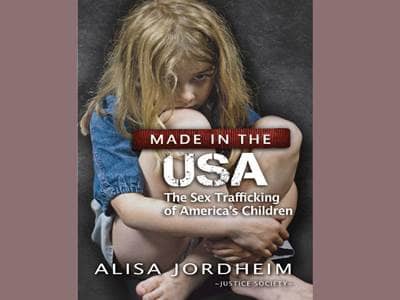
“Shhhh,” he says, “shhhh. Everyone is sleeping.”
Kate slept that night. In fact, she hibernated for the next nine years.
Kate was only eight years old at the time of her rape and subsequent trafficking. Her perpetrator was not a stranger and he did not crawl in through her bedroom window late at night. He was her uncle. He was someone she trusted, who only saw her as a commodity to be used and sold for the sexual pleasure of countless child rapists. He was her trafficker.
Kate’s story is all too familiar. In most cases children are coerced or forced into sex trafficking by someone they know and likely even trust.
Why? Why would strangers, friends, even family members sell children for sex? The answer is money.
A trafficker can make anywhere from $500 to $1,000 a night per child. With such “big money” to be made it is not surprising that sex trafficking is the fastest-growing component of organized crime and the third-largest criminal enterprise in the world. “It is estimated that at least 100,000 American children are being exploited through pornography or prostitution every year in the United States.” Most of these children are between the ages of 12-14, with both boys and girls affected.
How? How are our children being lured and forced into such a heinous crime? The answer is vulnerability.
There is a myriad of vulnerability factors: patterns of running away, truancy, homelessness, abuse within the home; but the primary vulnerability for these children is their immaturity. They are often naïve and quick to believe the lies a trafficker may use to lure them in. A trafficker will intentionally develop a relationship with the child as a boyfriend or caregiver, offer a job opportunity (often too good to be true) or simply provide the child with a place to stay – all for gaining their trust to ultimately traffic them.
Now that you have a snapshot of child sex trafficking in America, how do you feel?
Are you sad, angry or overwhelmed at the magnitude of the problem? Each of these emotions has its place. But, without action, none of them will make a difference in the fight to help our kids. It is time for the faith community to take action and make a difference.
The question is “how do we make a difference with our busy schedules, limited funds and differing beliefs?” I propose that the most effective approach to tackling such a big problem is to tap into your passions, utilize your resources and work within your existing sphere of influence. Many people think they need to actively rescue kids from brothels or start a non-profit to help the cause. It just isn’t so.
I recommend that you take stock of your skills and influence and use it as a platform for you or your organization to raise awareness, train the community, lobby legislators, raise funds or perhaps help in the process of restoring a child survivor of sex trafficking. The opportunities are endless. You just need to determine where your passions and strengths lie and get creative. Here are some examples of people from different background and faiths making a difference:
- Josh uses his e-commerce fraud business to help law-enforcement track down traffickers. While training law enforcement in fraud detection his company unintentionally ran across a trafficker and he determined to take the opportunity to incorporate an anti-trafficking component to the business.
- Dina is a school counselor who attended a child sex trafficking training. The next day she had a student in her office presenting a number of the “red flags” of a trafficking victim. Dina reported the child to law-enforcement and it was confirmed that the child was being trafficked and transported across state lines over an extended period of time. Having witnessed the issue first hand, Dina was instrumental in bringing child trafficking awareness and response training into her school system.
- Chelsea was a busy, stay at home mom with very little time for outside activities. She had a heart to end child trafficking but didn’t know what she could with her limited availability. She started a small jewelry making business in her home, on her own schedule and gave a portion of the proceeds to anti-trafficking organizations.
Whatever your faith, culture or situation, making a difference is always a possibility. It’s time to evaluate your strengths, tap into your passions and seek like-minded folks within your faith community to develop a plan and take action to end child sex trafficking in America. You can do it!
Made in the USA: The Sex Trafficking of America’s Children is the debut book of author Alisa Jordheim. Throughout the book, she discusses the issues related to domestic minor sex trafficking, shares personal stories and stories of others, and ultimately offers hope and suggestions as to what we can do to put an end this heinous crime.


